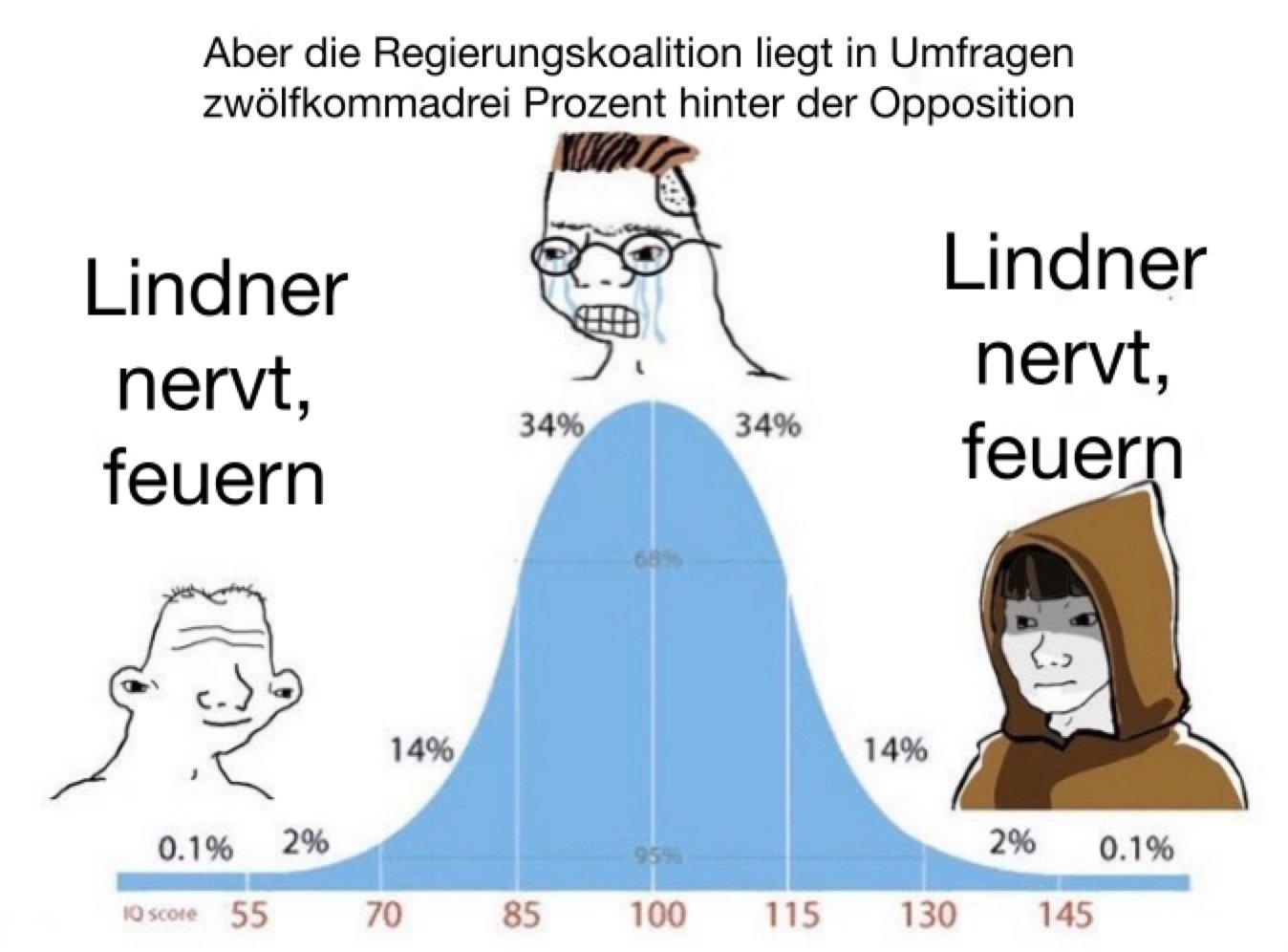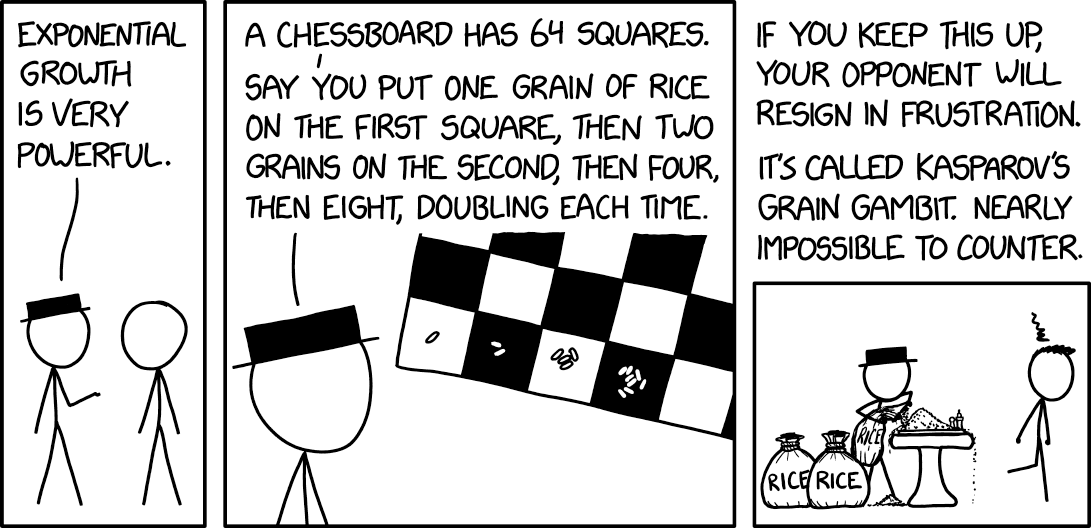Sieht ganz schön aus! Eine feddit-Referenz passt nicht drauf, oder?
Dayroom7485
Waah ich hab’s verpasst, meine -42 Tabs tauchen in der Statistik nicht auf 🙈 hammer Auswertung! 🔨
✨NEU✨ ab sofort mit 50% weniger Inhalt!
Die kleineren Portionen führen hoffentlich dazu, dass weniger Leute die überzuckerte ungesund Scheiße fressen, die Dr Oetker verkauft.
Naja wenigstens zahlen sie ja ihren gerechten Anteil an Steuern. Oder? Oder?
Absolutely gorgeous, thanks for sharing!
Größter Schock meines Lebens war beim Dönermann im Pott: „Kräutersoße haben wir nicht, willst du Tzatziki?“ Musste notgedrungen auf Currywurst umgleisen 😖
Geldstrafen sind ungerechte Strafen, die vor allem Arme bestrafen. Armin macht als Abgeordneter 11.000€ brutto. Die 450€ sind 4% seines Bruttomonatseinkommens. Der könnte im selben Monat noch 5x mit 100 durch die 50er Zone fahren, und würde es im Geldbeutel nicht merken.
🥳🍾
I am a bit too dumb to understand that graph and asked ai for an explanation. It helped me, maybe it also helps others:
This graph comes from a study by Gilens and Page that examines how different groups influence U.S. policy decisions. It has three separate charts, each showing how policy adoption (whether a policy is enacted) relates to the preferences of different groups:
1. Average Citizens’ Preferences (top chart)
2. Economic Elites’ Preferences (middle chart)
3. Interest Group Alignments (bottom chart)
Breaking It Down:
• X-axis:
• In the first two graphs, it represents how much each group supports a policy (from 0% to 100%).
• In the third graph (Interest Groups), the x-axis shows alignment, with negative values meaning opposition and positive values meaning support.
• Y-axis:
• The left y-axis (dark line) shows the predicted probability of a policy being adopted.
• The right y-axis (gray bars) shows how often different levels of support occur in the data (percentage of cases).
Key Takeaways & Surprises:
1. The top chart (Average Citizens) is nearly a flat line.
• This means that whether the general public strongly supports or opposes a policy has little impact on whether it gets adopted.
2. The middle chart (Economic Elites) has a rising curve.
• This suggests that policies supported by the wealthy have a much higher chance of being adopted.
3. The bottom chart (Interest Groups) also shows a strong upward trend.
• The more interest groups align in favor of a policy, the more likely it is to be adopted.
Big Picture:
This graph suggests that the opinions of average citizens have little to no effect on policy decisions, while economic elites and interest groups have significant influence. This challenges the idea that the U.S. operates as a true democracy where the will of the majority decides policy.
Ich will nicht lügen, das ist ein ziemlich mieses Maimai. Aber auf die Aussage können wir uns einigen 🤝










Ok ja ist passt, es gefällt! 😎